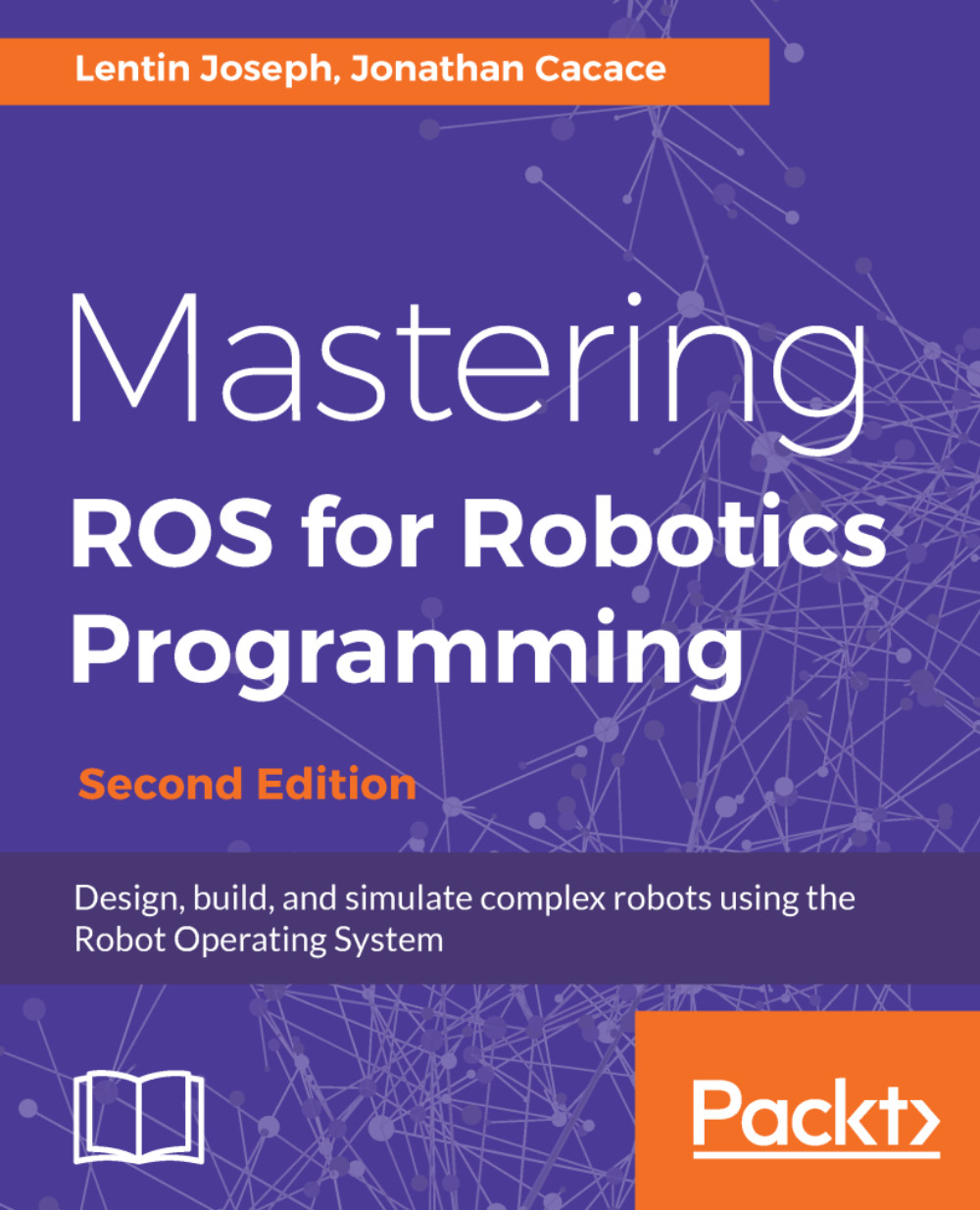Creating a robot model for the differential drive mobile robot
A differential wheeled robot will have two wheels connected on opposite sides of the robot chassis, which is supported by one or two caster wheels. The wheels will control the speed of the robot by adjusting individual velocity. If the two motors are running at the same speed, the wheels will move forward or backward. If one wheel is running slower than the other, the robot will turn to the side of the lower speed. If we want to turn the robot to the left side, we reduce the velocity of the left wheel, and vice versa.
There are two supporting wheels, called caster wheels, that will support the robot and rotate freely based on the movement of the main wheels.
The URDF model of this robot is present in the cloned ROS package. The final robot model is shown here:

Figure 12: Differential drive mobile robot
The preceding robot has five joints and links. The two main joints connect the wheels to the robot, while the others are fixed joints...






























































